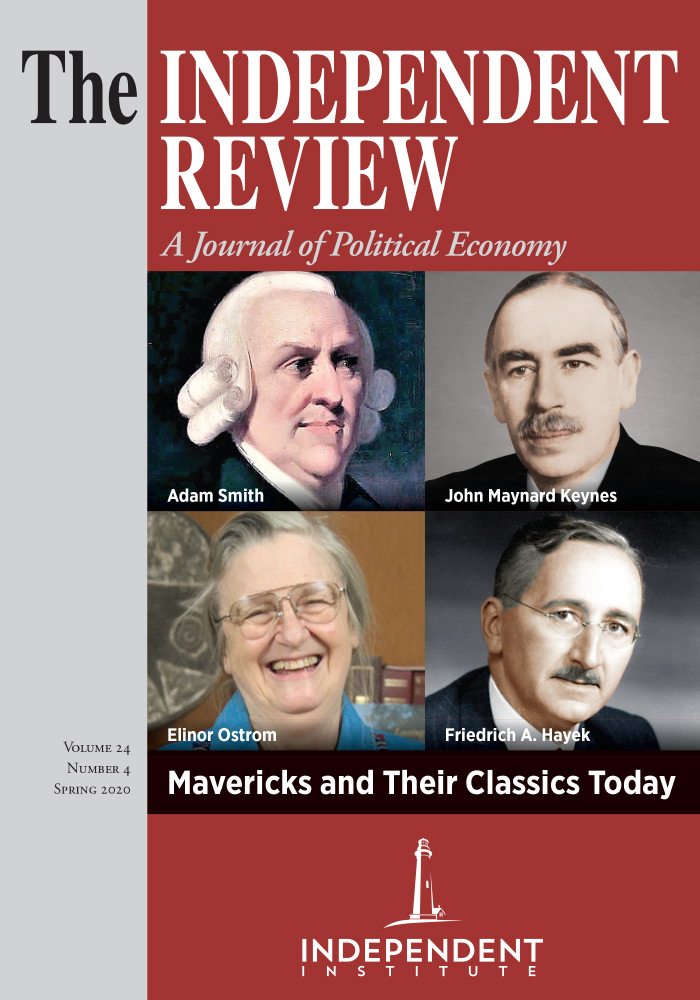First published in 1936, John Maynard Keynes’s General Theory of Employment, Interest, and Money didn’t become influential until after World War II, when a simplified and attenuated version entered the profession. Keynes’s complex, difficult, and often obscure analysis eventually took hold because it gave many economists just what they were looking for: a theoretical rationale for major government intervention to remedy what they regarded as the unreliability of market systems to avoid or recover quickly from recessions.
William N. Butos is a Professor of Economics at Trinity College.
Economic PolicyEconomistsEconomyFederal Budget PolicyFederal Tax PolicyFiscal Policy/DebtPhilosophy and ReligionTaxes and Budget
| Other Independent Review articles by William N. Butos | |
| Fall 2015 | Causes and Consequences of the Climate Science Boom |
| Fall 2011 | The Doomsday Lobby: Hype and Panic from Sputniks, Martians, and Marauding Meteors |
| Fall 2006 | Government and Science: A Dangerous Liaison? |









